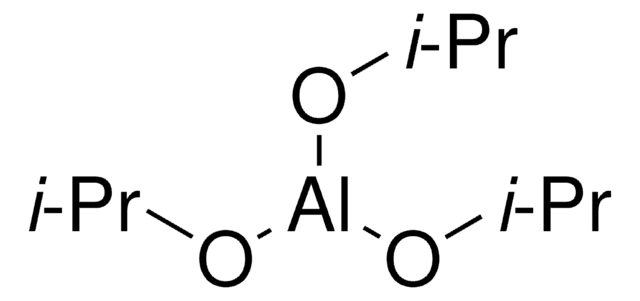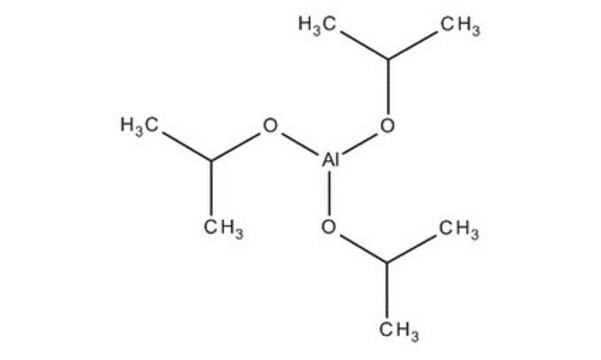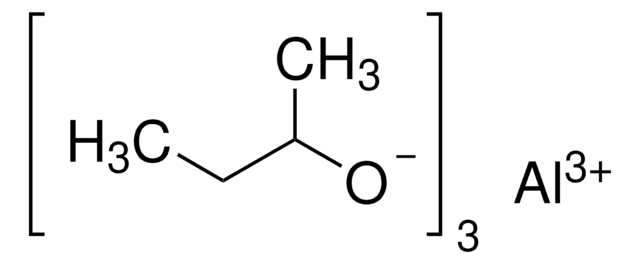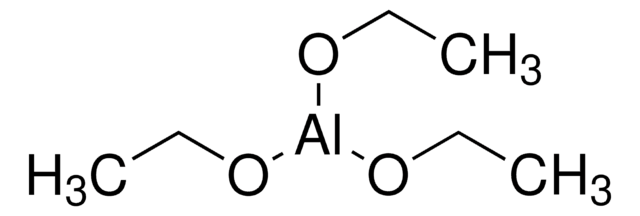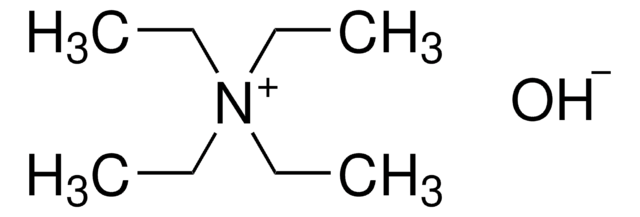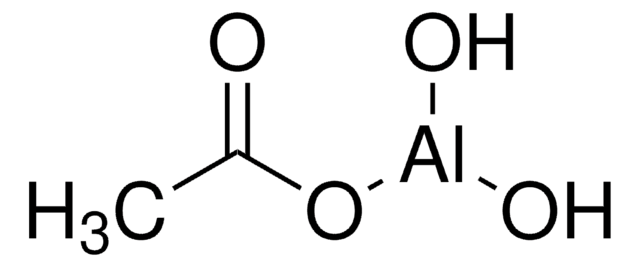229407
Aluminum isopropoxide
≥99.99% trace metals basis
Synonyme(s) :
AIP, Aluminum isopropylate, Aluminum triisopropoxide
About This Item
Produits recommandés
Niveau de qualité
Pureté
≥99.99% trace metals basis
Forme
powder and chunks
solid
Pertinence de la réaction
core: aluminum
reagent type: catalyst
Pf
128-133 °C (lit.)
Densité
1.035 g/mL at 25 °C (lit.)
Chaîne SMILES
CC(C)O[Al](OC(C)C)OC(C)C
InChI
1S/3C3H7O.Al/c3*1-3(2)4;/h3*3H,1-2H3;/q3*-1;+3
Clé InChI
SMZOGRDCAXLAAR-UHFFFAOYSA-N
Vous recherchez des produits similaires ? Visite Guide de comparaison des produits
Description générale
Application
- Sol-gel precursor to synthesize ZnAl2O4 powders for transparent ceramics.
- Precursor material for the fabrication of nanosized SAPO-34 zeolites with a 4-fold increase in catalytic lifetime and significantly increased selectivity.
- A starting material to prepare long-persistent luminescence materials for display devices and bioimaging.
- Coating material to fabricate electrodes for lithium-ion batteries to enhance cycling stability and performance.
- A catalyst for alkylation of resorcinol with camphene.
Mention d'avertissement
Danger
Mentions de danger
Conseils de prudence
Classification des risques
Flam. Sol. 1
Code de la classe de stockage
4.1B - Flammable solid hazardous materials
Classe de danger pour l'eau (WGK)
WGK 1
Point d'éclair (°F)
60.8 °F - closed cup
Point d'éclair (°C)
16 °C - closed cup
Équipement de protection individuelle
Eyeshields, Gloves, type P3 (EN 143) respirator cartridges
Faites votre choix parmi les versions les plus récentes :
Déjà en possession de ce produit ?
Retrouvez la documentation relative aux produits que vous avez récemment achetés dans la Bibliothèque de documents.
Les clients ont également consulté
Articles
Nanostructured Materials Through Ultrasonic Spray Pyrolysis
Advanced Inorganic Materials for Solid State Lighting
Nanomaterials are considered a route to the innovations required for large-scale implementation of renewable energy technologies in society to make our life sustainable.
Advances in materials have often been led by the development of new synthetic methods that provide control over size, morphology and structure. The preparation of materials in a scalable and continuous manner is critical when development moves beyond lab-scale quantities.
Notre équipe de scientifiques dispose d'une expérience dans tous les secteurs de la recherche, notamment en sciences de la vie, science des matériaux, synthèse chimique, chromatographie, analyse et dans de nombreux autres domaines..
Contacter notre Service technique